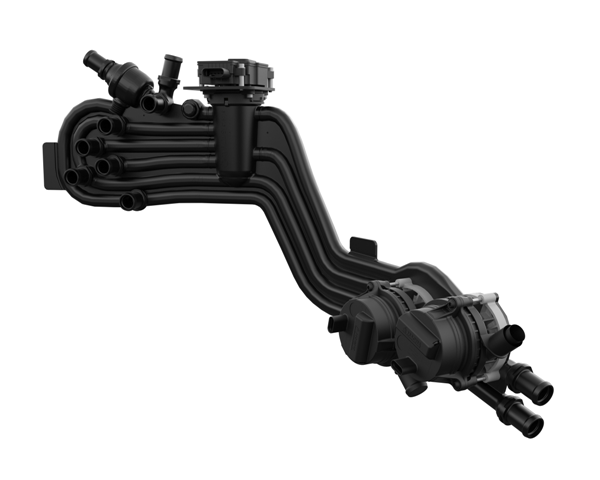Jonathan Newell talks to TI Fluid Systems about how automotive electrification has changed its cooling products
Automotive supplier, TI Fluid Systems (TIFS) has already accumulated a century of experience in providing fluid handling technology. Its products have been keeping Internal Combustion Engine (ICE) vehicles cool and supplied with fuel as well as performing other functions throughout that time.
Now, the company is already geared up to continue providing key technology to the industry during its massive shift to electrification. To find out how the company’s products are affected by this change, I spoke to Hans Dieltjens, the CEO of TI Fluid Systems.
According to Dieltjens, with China and Europe increasing sales numbers for electrified cars to 100 million by 2030, Battery Electric Vehicle (BEV) sales could go up by 30-40% and Plug in Hybrid Electric Vehicles (PHEV) by 12-15%, representing a significant change that is driving different approaches to thermal and fluid management. “TIFS is uniquely placed to handle this level of change because of the doubling amount of thermal management, moreso for hybrids,” he says.
“Batteries only operate efficiently at a very limited temperature range and to keep within that range, they need both heating and cooling. In addition to that, power train components also need cooling and the cabin needs HVAC, that’s a lot of thermal management going on in the car,” he explains.
TI examines all aspects of thermal management including the heat exchangers, the movement of coolant to the places where it’s needed and the HVAC. At the same time, there is a strong focus on weight reduction and energy efficiency. Since the only source of power on a BEV is the battery, any ancillary energy demands will be supplied by the battery and thus reduce range.
“The heat pump and coolant system Take thermal management from the refrigerant system through heat exchangers so the principles of cooling remain the same and it therefore comes down to fluid management,” says Dietjens.
He continues by explaining that BEVs are all about efficiency or how the electricity is used most efficiently without loss – Managing coolant and liquid flow is critical to this.
TIFS has its “take the turn” strategy, which adapts existing technology and know-how for use in new applications. The company has therefore been using its capabilities in material technology and lightweighting to fulfil the efficiency needs.
In this respect, traditional aluminium and rubber component constructions have been replaced with TSPRL (Thermal Plastic Refrigeration Lines), a multi-layer nylon construction that offer both economic value in terms of cost savings as well as providing between 30 and 60% weight reduction opportunities over Al/rubber.
“Materials technology is a focus for TIFS, we have experience in the development of new products and these new materials are of particular benefit to electric vehicles,” he says.
Cabin Environment
The vehicle accommodation also needs to have its climate controlled and cabin heating, which is mostly pure electric heating on BEVs, can have a significant effect on range, particularly in cold climates. To reduce the effect on range, TI heat pumps make use of the residual heat in the coolant system to provide cabin heating.
Simulation and Testing
Throughout its product development work, TI Fluid Systems works closely with OEMs and also has its own e-mobility innovation centres for coolant systems, where engineers are involved in simulation, prototyping and testing. Extensive testing is also carried out when the systems are built into final vehicles.
The e-mobility innovation centres are located throughout the world with a dynamometer in Germany for putting full vehicle systems through parametric testing against customer requirements. This involves a lot of work with the automotive manufacturers.
“We work mainly with the OEMs because this is where the battery management lies. Each OEM is trying to differentiate so they’re looking to make a difference in efficiency, concludes Dietjens.
- UK manufacturing steps up to COVID-19 crisis - April 2, 2020
- Clustering Innovation - March 12, 2020
- A Global Monitor - March 6, 2020

